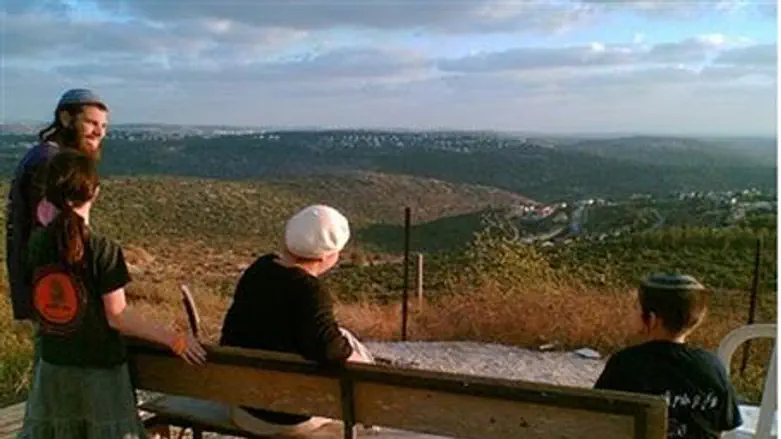
Judea and Samaria, or, in mediaspeak, “the West Bank,” is one of the most-mentioned geographical areas in the world media – and certainly identifiable to most Europeans and Americans who follow world news.
But just how much do people actually know about the region – in particular, Samaria (Shomron in Hebrew)? Not very much, says Michael Gottlieb, a born and bred New Yorker who now makes his home in Karnei Shomron, in central Samaria.
And not only doesn't the average news consumer outside the country know anything about the Shomron, but most Israelis also “think it's on another planet,” Gottlieb tells Israel National News. But “far from being in outer space, the Shomron is virtually in their own backyard. From Kfar Saba's industrial zone, the Shomron is barely a 10-minute bike ride away. Its mountains are visible from almost any elevated location in Israel's center. And its strategic value to Israel is immense,” Gottlieb says.
In order to dispel that ignorance, Gottlieb set up the Shomron Central Blog, blogosphere's first Shomron-centric blog designed to explain, in plain and clear language and photos, exactly what the Shomron means to Israel. There is also a Hebrew version on the site). The blog is actually part of an overall, one-man campaign that Gottlieb has taken on, to educate Israelis, tourists, and everyone else about the Shomron; besides the blog, Gottlieb organizes bus tours of the Shomron, showing visitors the where, what and why of the region.
Educating Israelis and others about the basic security issues is the blog's main purpose, says Gottlieb. “Jews who believe in the Bible accept the idea of the Shomron as part of the Land of Israel, but skeptics don't accept that. But even skeptics can't deny the security importance of the Shomron.”
And that importance is graphically illustrated the moment a visitor opens the blog webpage; two photos of Tel Aviv, as viewed from the Shomron, show what the city looks like today – and what it could look like with Arab missiles being fired from the heights of the Samarian foothills. “Whoever controls the Shomron mountain range also controls the low-lying regions on each side below,” Gottlieb writes. “This means the heavily populated Gush Dan, Sharon and Carmel Coast regions (together, the coastal plain) to the west and the strategic Jordan Valley to the east would both be at the mercy of any foreign power that would hold the Shomron.”
Indeed, it's the fate of the majority of Israel's population that most concerns Gottlieb. “Three million Israeli Jews, more than half of the country's Jewish population, are squeezed into the Tel Aviv metropolitan area, located just a few kilometers from western Samaria. Such a dangerous over concentration of civilians leaves them vulnerable and represents a frightful strategic threat in times of war,” he says.
That security concern, along with appreciation for the biblical Land of Israel, is behind the fervent activity by “hilltop youth” and the establishment of the outposts, all of which Gottlieb discusses on the blog, he says.
Instead of letting people just read about the risks, Gottlieb has also organizes several bus trips for residents of the Gush Dan area to come and see firsthand what the dangers are. “It's one thing to read about the Shomron's importance, but another to see it firsthand. Almost everyone who comes on our trips comes away with an appreciation of what we talk about on the blog,” he says.
Gottlieb isn't trying to scare anyone, but he is trying to deliver an important message. “Today, all indications point to a likely abandonment of virtually all of Samaria in the context of either an Israel-Palestinian peace deal ("Two-State Solution") or a unilateral Israeli withdrawal, if and when that happens. Every thinking and intellectually honest supporter of Israel owes it to him/herself to know exactly what will be at stake should such a scenario materialize and how it will affect us all in the future,” he says.